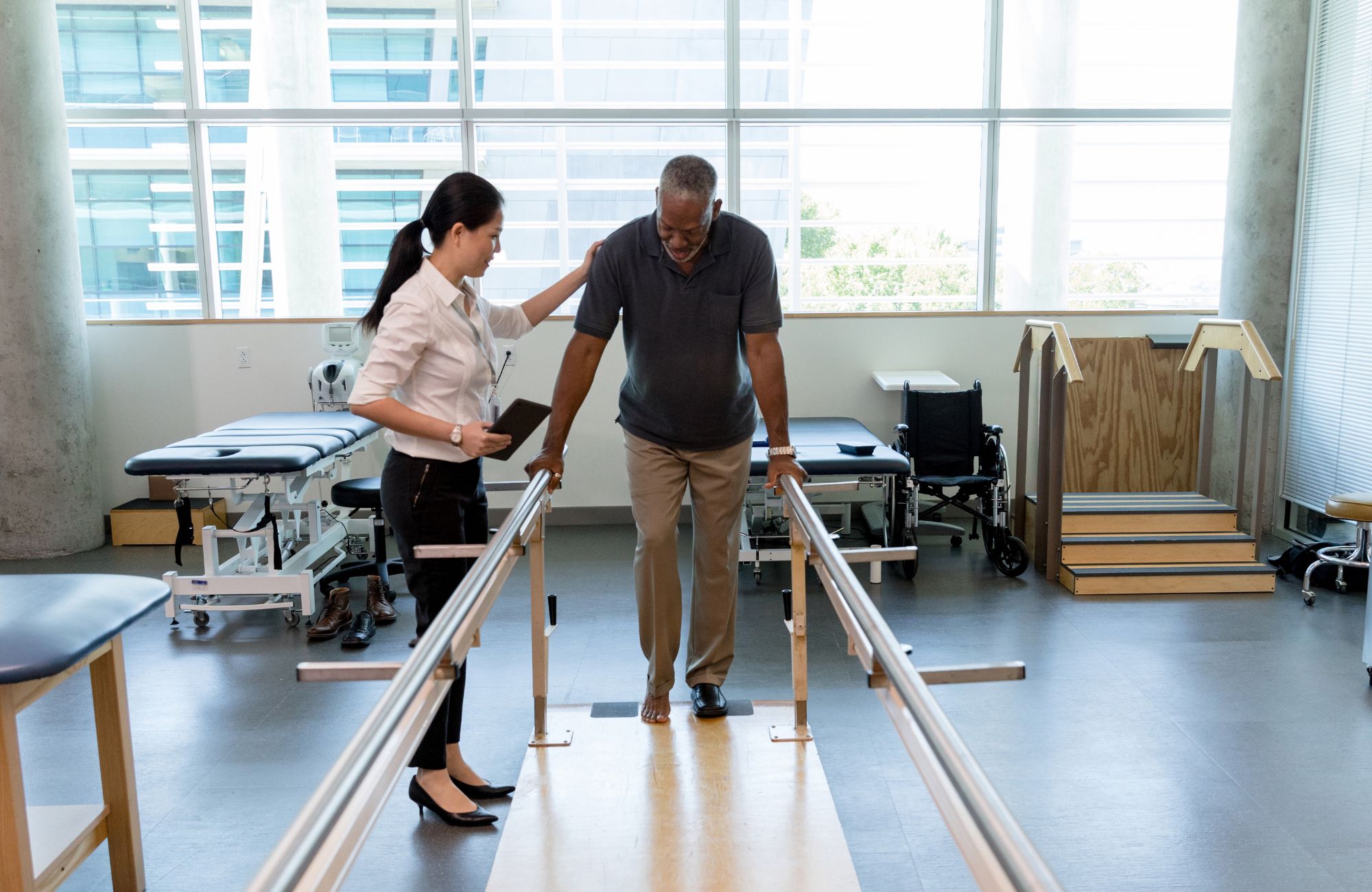We get this question a lot: “Speech pathologist vs speech therapist, what’s the difference?” In daily use, the titles often refer to the same profession. In the United States, the licensed professional is the speech-language pathologist (SLP), and many people say speech therapist to mean the same thing. That said, the title speech-language pathologist signals a protected license, a defined scope of practice, and a specific educational path with academic accreditation, state licensure, and clinical competence standards.
Below, we explain what speech language pathologists do, where speech language pathologists work, how the education and supervised clinical experience requirements function, and how “speech therapist” is used. We also share key differences, salary and labor statistics, and practical guidance to help you choose the role that fits you.
Are “Speech Pathologist” and “Speech Therapist” the Same Profession?
Short answer: In most U.S. settings, yes. A speech therapist is a common name for speech-language pathologists. The licensed title on the badge and the resume is speech-language pathologist (SLP). SLPs assess, diagnose, and treat communication disorders, speech and language disorders, and swallowing disorders across the lifespan.
You’ll still see “speech therapist” used by employers, families, and even some clinics. When in doubt, confirm the license. For U.S. careers, plan on the SLP route.
What Speech-Language Pathologists Do
Speech-language pathology is the clinical field behind the title. As specialized healthcare professionals, SLPs:
- Perform diagnostic evaluations for various communication disorders
- Create plans that address speech production, language comprehension, language development, social communication, voice disorders, fluency disorders, and swallowing difficulties
- Deliver therapy sessions with targeted interventions and measurable goals
- Document progress and adjust therapy techniques based on data
- Collaborate with other healthcare professionals, teachers, caregivers, physical therapists, and occupational therapists to treat patients across settings
Common clinical focus areas include:
- Speech production and speech sounds (articulation and phonological disorders)
- Language disorders and language difficulties affect language skills
- Social communication skills for autism and related speech and language challenges
- Fluency disorders (stuttering) and voice disorders
- Swallowing disorders and feeding difficulties
- Traumatic brain injury and adult communication difficulties
- Augmentative and alternative communication (alternative communication systems) for severe communication impairments
Where SLPs work: hospitals, educational settings (early intervention, K–12, and higher ed), rehab, home health, and private practice. Telepractice is common as well.
What “Speech Therapist” Usually Means
In the U.S., “speech therapist” usually refers to an SLP and the same licensed work described above. In some contexts outside the U.S., the term may reflect different training. For job seekers here, plan for the speech language pathology route, which includes a master’s degree, state licensure, clinical competence (CCC-SLP), and continuing education.
Key Differences at a Glance
Use this table when you see speech pathologist vs speech therapist in job ads or school pages.
| Topic | Speech Pathologist (SLP) | “Speech Therapist” in U.S. usage |
|---|---|---|
| Legal title | Speech-Language Pathologist (SLP) | Often a casual label for an SLP |
| Education | Bachelor’s degree (often in communication sciences) + master’s degree in SLP | Commonly the same education when used for licensed roles |
| Accreditation | Graduate programs accredited by the Council on Academic Accreditation (CAA) | Same when referring to SLP roles |
| Exams & license | Praxis exam + state licensure | Same when referring to SLP roles |
| Competence | Certificate of Clinical Competence (CCC-SLP) from the American Speech-Language-Hearing Association | Same when referring to SLP roles |
| Scope | Diagnostic evaluations, plan of care, therapeutic interventions, interprofessional collaboration | Same when referring to SLP roles |
| Settings | Hospitals, educational services, rehab, private practice, home health, telepractice | Same when referring to SLP roles |
Conditions Treated and Services Provided
SLPs treat:
- Speech disorders: inaccurate speech sounds, phonological disorders, apraxia, dysarthria
- Language disorders: language comprehension and language development delays, expressive and receptive language challenges
- Fluency disorders: stuttering, cluttering
- Voice disorders: quality, pitch, loudness
- Swallowing disorders: oropharyngeal dysphagia, pediatric feeding difficulties
- Complex communication needs: augmentative and alternative communication and alternative communication device trials, training, and follow-ups
- Neurologic conditions: traumatic brain injury, stroke, dementia with communication difficulties
Therapy sessions apply targeted interventions matched to goals: motor-based drills, language stimulation, stuttering modification, voice hygiene, swallow rehab, and AAC training.
Skills That Make You Effective in the Field
From my work with teams, the essential skills are clear:
- Clear communication skills with clients, families, and teams
- Clinical reasoning for diagnostic evaluations and treating speech and language disorders
- Consistent data collection to improve communication skills
- Adaptable therapy techniques across ages and needs
- Teamwork with healthcare professionals and educators across educational settings and medical care
- Commitment to continuing education to stay current with evidence and technology (including AAC).
Education, Licensure, and Certification (U.S.)
Educational path for aspiring speech-language pathologists:
- Bachelor’s degree (often in communication sciences or a related field).
- Master’s degree in speech-language pathology from a CAA-accredited graduate program.
- Pass the Praxis SLP exam (current ASHA passing score 162).
- Complete a mentored Clinical Fellowship (supervised clinical experience; commonly 36 weeks / 1,260 hours).
- Earn the CCC-SLP (clinical competence) from the American Speech-Language-Hearing Association and secure state licensure.
- Maintain license and certification through continuing education. State rules vary.
Note: Programs and credentials align training to the scope of practice for speech pathology, including screening, diagnostic evaluations, and providing therapeutic interventions across speech and language, and swallowing care.
Job Outlook, Pay, and Work Settings
Demand remains strong. According to the U.S. Bureau of Labor Statistics, employment for SLPs is projected to grow 18% from 2023–2033, much faster than average. Median annual wage in May 2023 was $89,290 (50th percentile).
| Metric | Data |
|---|---|
| Projected job growth | +18% (2023–2033) |
| Median annual wage (May 2023) | $89,290 |
| Common settings | Schools, hospitals, outpatient rehab, home health, private practice, telepractice |
| Frequent team members | Other healthcare professionals, teachers, physical therapists, and occupational therapists |
Why demand is rising: aging population, needs in schools, more referrals for early speech and language screening, and broader awareness of communication impairments.
Which Career Fits You?
Use this quick guide if you’re deciding between roles often framed as speech pathologist vs speech therapist:
- Choose the SLP path if you want responsibility for diagnostic evaluations, plan of care, AAC evaluations, and collaboration across medical and school teams.
- If you see job posts labeled “speech therapist” in the U.S., confirm they refer to a licensed SLP role. In most cases, they do.
Checklist for fit
- Do you enjoy solving complex communication disorders across age groups?
- Are you ready to complete a master’s degree, graduate programs with academic accreditation, and a guided clinical experience?
- Do you want options across educational services, medical rehab, and private practice?
- Are you interested in augmentative and alternative communication and technology?
- Do you like working with teams of healthcare professionals?
How We Support Your Career at Flagstar Rehab
At Flagstar Rehab, we place speech language pathologists and “speech therapist” candidates (licensed SLPs) across the country. We help you match your strengths to roles in:
- Educational settings: early intervention, K–12, and university clinics
- Medical and rehab: hospitals, SNFs, outpatient, home health
- Private practice groups and telepractice partners
We also staff physical therapists and occupational therapists, so you can join integrated teams focused on client outcomes. We highlight your clinical experience, niche skills (AAC, voice disorders, fluency disorders, swallowing disorders), and your interest in specific populations (pediatrics, adult neuro, traumatic brain injury).
What you get with us
- Targeted job matches and targeted interventions in your search strategy
- Interview coaching that reflects your essential skills and scope
- Transparent salary ranges using current labor statistics
- Support for license portability, continuing education, and onboarding
Conclusion
Whether a job listing says speech pathologist or speech therapist, in most U.S. settings it refers to the same profession, a licensed speech-language pathologist who can assess, diagnose, and treat a wide range of speech and language disorders. The differences in titles often come down to naming preferences, not the scope of practice. If you’re planning a career in speech-language pathology, expect to complete a bachelor’s degree, a master’s degree from an accredited program, a supervised clinical experience, and the requirements for state licensure and clinical competence. With strong labor statistics and a broad choice of educational settings, medical roles, and private practice opportunities, this field offers stable, rewarding work that helps people improve their communication skills and quality of life.
At Flagstar Rehab, we connect aspiring speech language pathologists and experienced SLPs with positions that match their skills and goals. Whether you want to work in schools, hospitals, rehab, or community care, we can help you find the right fit and support your professional growth. Contact us today to learn about current openings.
FAQs
Who gets paid more, a speech pathologist or an occupational therapist?
According to the latest labor statistics, the median annual wage for speech-language pathologists in May 2023 was about $89,290. Occupational therapists reported a median annual wage of about $96,370. Actual pay can vary based on work setting, experience, and geographic location, so both fields offer competitive salaries and strong job growth.
Does a speech pathologist do speech therapy?
Yes. A speech pathologist is the licensed professional who delivers speech therapy. This includes evaluating and treating speech, language disorders, voice disorders, fluency disorders, and swallowing disorders. They also design and run therapy sessions to help clients improve communication skills and address speech and language challenges.
What are the two types of speech therapy?
Speech therapy can be divided into two broad types:
- Articulation and speech production therapy – Targets speech sounds, phonological disorders, and motor patterns needed for clear speech.
- Language and communication therapy – Focuses on language comprehension, language development, social communication skills, and alternative communication methods such as augmentative and alternative communication.
What does a speech pathologist do?
A speech pathologist works with individuals who have communication disorders, speech and language disorders, and swallowing difficulties. They perform diagnostic evaluations, create treatment plans, provide therapeutic interventions, and collaborate with other healthcare professionals in educational settings, hospitals, private practice, and rehabilitation facilities. Their goal is to treat patients and help them build the language skills, speech production, and communication skills they need for daily life.







